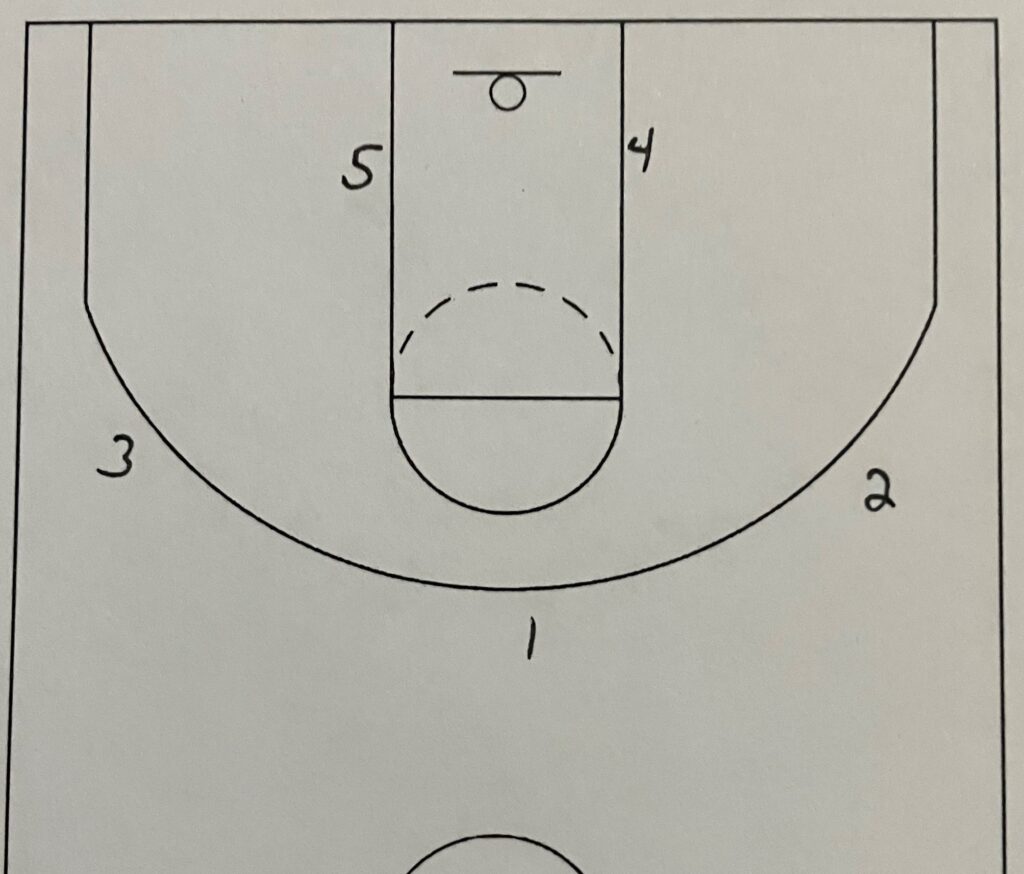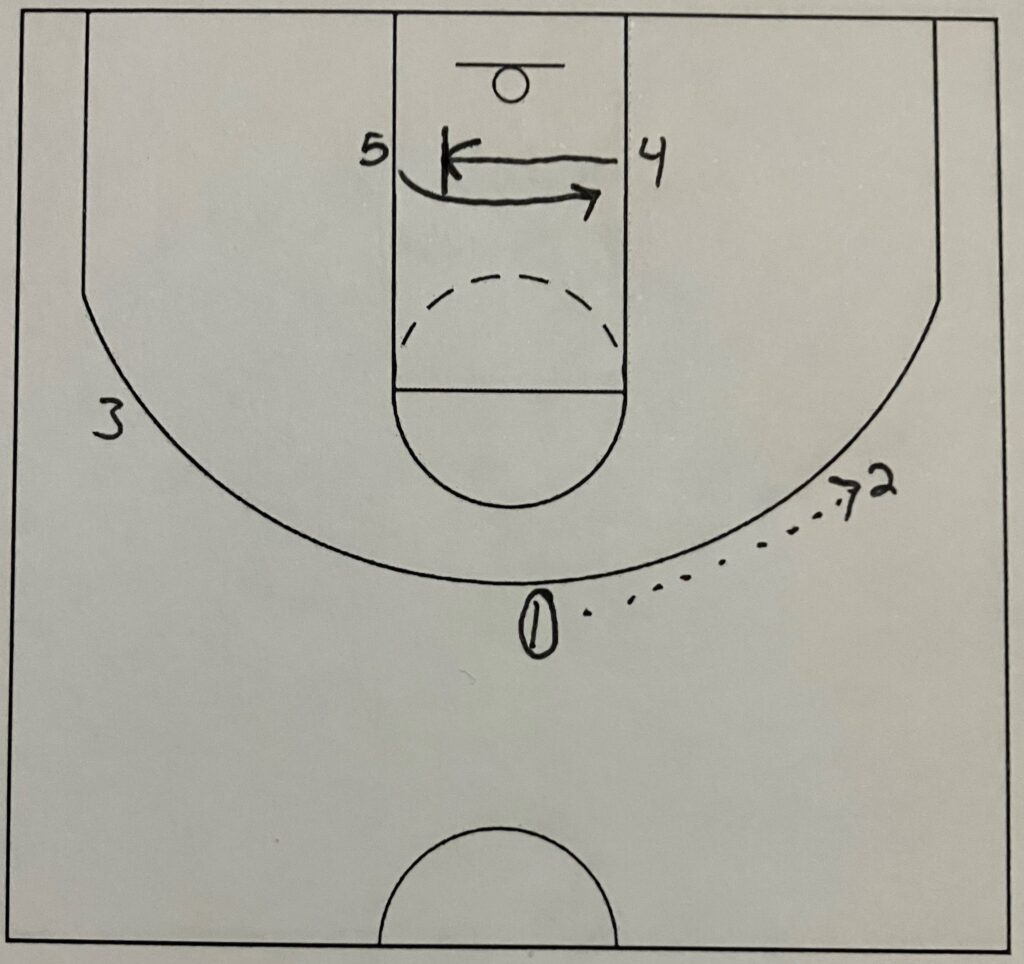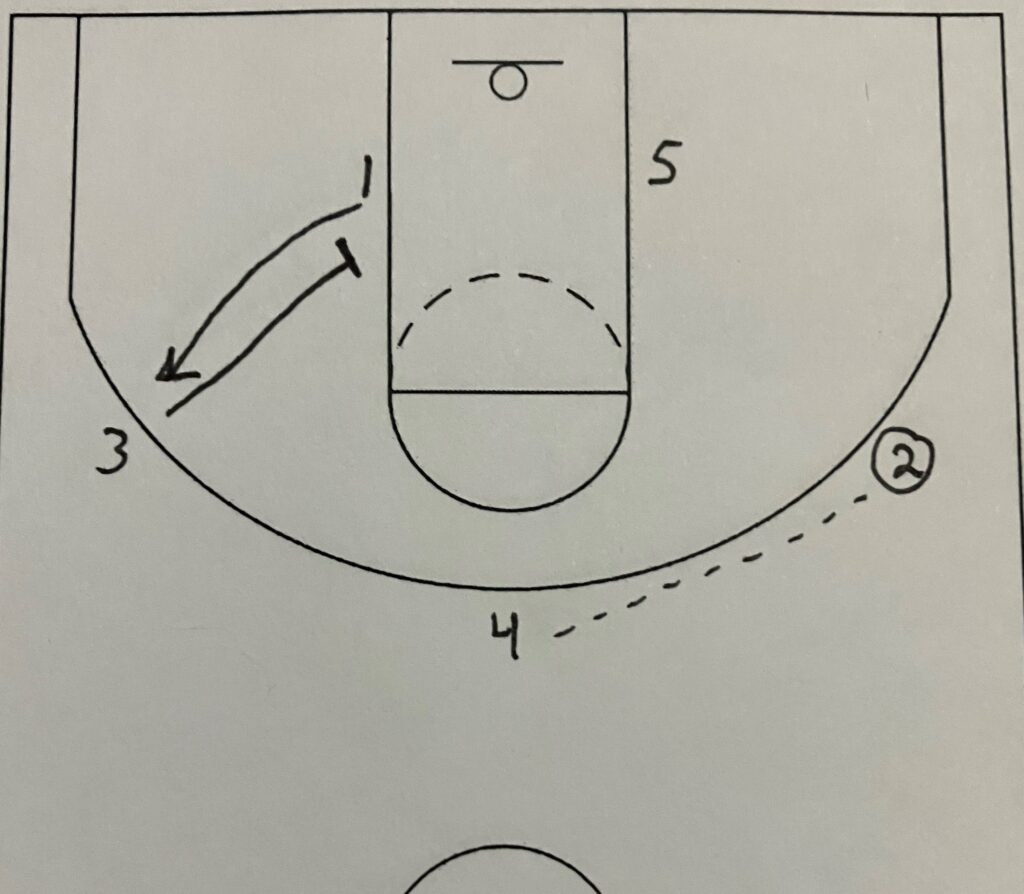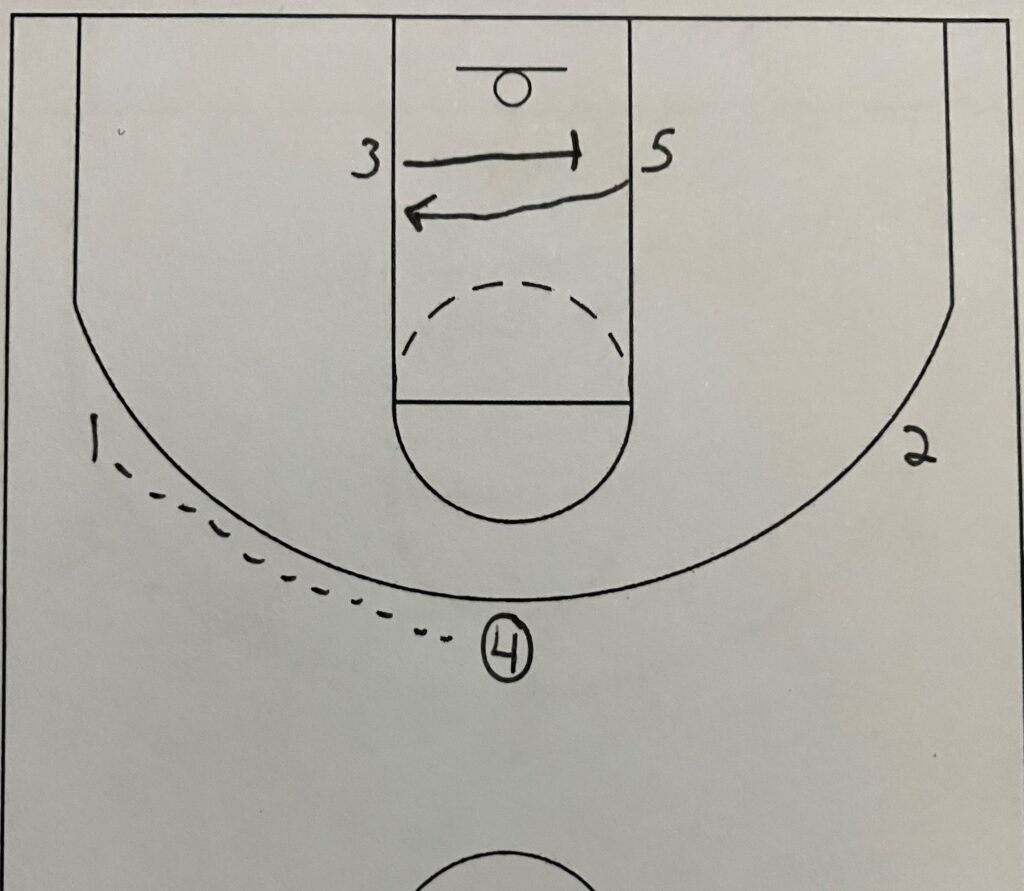There are all kinds of different offenses and a team’s offense should match their personnel. The game of basketball has moved to an open floor, dribble drive offense base in the last ten years that can be difficult for some teams to play that style of game. What kind of offense can be ran if the players are not able to be effective in a dribble drive offense? Following is an offense that does not rely on the dribble at all but movement and screens. This offense can be really good for a bigger, slower team that does not have great guard play. While that is probably the type of team best suited for this offense, it is not the only type of team that can run this offense. This offense can be utilized by any team.

The offense starts in a standard 1-2-2 formation. The point is at the top, the wings are foul line extended and two players are on each block.

The point(1) passes to the wing(2). One of the bigs is going to stay on the block and be posting up. The first pass should be away from this big. In these diagrams, I am going to have the 5-man as the constant post. So as the pass is made the ballside big(4) sets a screen across to the post up(5).

After the away screen, the point(1) sets a down screen to the big(4). This down screen is going to keep happening. This is also the first screen the screener action of the offense. This is one of the best spots to score in the offense. If the down screener can get a good screen then the up cut, in this case the 4, will be open at the foul line for a shot. If you are familiar with the flex offense, then this type of screen is very similar to the one used in the flex offense.
The post(5) is posting up and if the ball can be entered then the wing(2) should pass the ball to the post(5).

The wing(2) passes to the big(4) off the down screen. This puts the ball back into the middle of the floor. Before the reversal pass, the wing(3) downscreens for the point(1). Another screen the screener action before the complete reversal.

The big(4) completes the reversal to the point(1). As the point(1) catches the wing(3) continues across to set a screen for the post(5). During this away screen, the offense is in another good scoring chance for the point(1). If the point catches and quickly makes a move to the basket the help defense should be occupied by the cross screen.
The post(5) should see the point(1) attacking and either stay away or cut away from the drive. If the point attacks baseline then the post goes to the high post or if the point drives middle then the post goes to the short corner.
If the point(1) does not attack then they are looking to enter the ball to the post(5) off the cross screen. Now the offense is starting to repeat.

Off of the cross screen the big(4) is setting a down screen for the wing(3). This is a flex offense like screen again.

The ball starts to reverse being passed from the point(1) to the wing(3) off the down screen. Now a 2nd screen the screener action with the wing(2) setting a down screen for the big(4). If the defense starts to overplay then the big(4) could curl cut around the wing’s(2) screen. Little things like curl cuts or a backscreen can give surprise the defense and lead to some easy baskets.

The ball is completely reversed after the down screen by the wing(2). The wing(2) continues across to set a screen for the post(5) to bring them back to the ballside post. From here the offense can continually repeat until the offense gets the shot they want. If the defense gets lazy that is when they will get stuck on a screen and the offense will get an open shot.
Conclusion
This offense is not for every team. It takes some time for players to learn the movements first. And then it takes even more time for the players to understand the timing of the screens. Some screens can be set faster and some screens players can wait a little bit to let the players stop for a second before setting the screen. As a defense, this play is very hard to defend when the offense has timing and good screens are being set by the offense.
A smaller team can negate size advantage because the screens should always be there to get them open to making passing around bigger opponents easier. Teams who lack guards can benefit because the dribble is not necessary. And this offense can be used to take some time off the clock before getting a shot.
This offense can be used in the 4th quarter when the offense is ahead and the defense is starting to pressure really hard. The offense can go to this to make passes easier knowing the defense is trying to get steals. The offense will force the defense to work around screens making defense that much harder.



